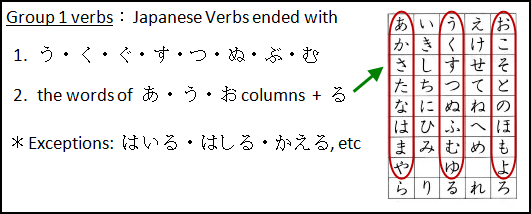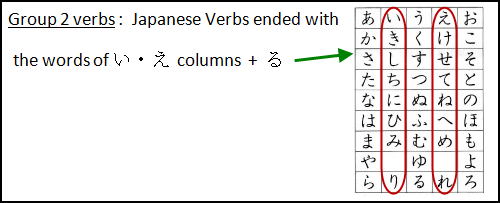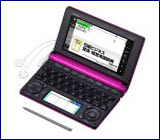- Home
- Basic Lessons
- Japanese Verbs
Japanese Verbs plus
Polite and Plain Styles -
Free Japanese Lessons: 18
Before I go into details of Japanese verbs, let's take some time to understand the 2 different types of speech in Japanese.
Japanese can be divided into 2 types of speech - Polite and Plain styles (or forms).
What you have learned so far until this lesson are all in polite style.
That's to say, those sentences which ended with です (desu), でした (deshita), ではありません (dewa arimasen), ではありませんでした (dewa arimasen deshita), ます (masu), ました (mashita), ません (masen), ませんでした are all polite style.
On the other hand, Plain style, which is shorter when compared to Polite style are sentences ended with だ (da), だった (datta), ない (nai), た (ta), なかった (nakatta), etc.
You can use Polite style anytime, talking to anybody. When talking to someone who you have met for the first time or not close enough, or to your superiors, it's best to speak in Polite style in order to be polite.
It's considered rude if you speak in Plain style to these people.
Whereas for Plain style, you use it when you are talking to family members, colleagues or close friends. It will seem strange to speak in polite style to them.
Besides, Plain style is commonly used in written work like Newspaper, books, etc. However most letters are written in the Polite style.
How to Decide If The Sentence is Polite or Plain Style?
The style of the speech is decided by the last Japanese verb (for verb sentence) that you used in a sentence.
Even if you have used many plain forms within the sentence, as long as it ends with polite form, the sentence is considered to be Polite style or form.
On the contrary, even if you have put in many polite forms within the sentence, as long as it ends with plain form, the sentence becomes Plain style.
For example consider the 2 following sentences...
- わたしはあしたがっこうへ いく と おもいます。
watashi wa ashita gakkou e iku to omoimasu - わたしはあしたがっこうへ いく と おもう。
watashi wa ashita gakkou e iku to omou
Both sentences mean "I think I am going to school tomorrow". The underlined Japanese verb いく is the dictionary-form of いきます (ikimasu) which means "to go".
Dictionary-form is considered one of the plain form (I will go into that later).
As you can see, the first sentence ended with the Japanese verb おもいます (omoimasu) which means "to think".
This is a polite ます-form (masu-form) verb. Therefore this sentence is considered to be a Polite style sentence.
However, the second sentence ended with the dictionary-form (plain form) of "to think", おもう (omou). In this case, this sentence is considered to be a Plain style sentence.
Plain Style of Japanese Verbs
Actually the Polite style that you have learned so far is not the basic of Japanese. The basic of Japanese is in the Plain style.
The dictionary-form that I mentioned just now is one of the Plain style. The reason why it is called dictionary-form is because it is the form you can find in dictionary.
Dictionary-form is also considered to be the Present Affirmative of Plain style. And you will get to learn the other forms in Plain style in future lessons.
See the following table for the various forms in Plain style for Japanese verbs.
| Polite Style | Plain Style | |
| Present Affirmative | ます | じしょ-form or dictionary-form |
| Present Negative | ません | ない-form or nai-form |
| Past Affirmative | ました | た-form or ta-form |
| Past Negative | ませんでした | なかった-form or nakatta-form |
The 3 Groups of Japanese Verbs in Dictionary-Form
Japanese verbs can be divided into 3 groups.
Group 1 Verbs
Group 1 verbs are verbs ended with う (u), く (ku), ぐ (gu), す (su), つ (tsu), ぬ (nu), ぶ (bu), む (mu), and the words of あ (a) column, う (u) column, お (o) column in the hiragana chart plus る (ru).
For example, the following are group 1 verbs:
- いう (iu) - say, tell
- いく (iku) - go
- およぐ (oyogu) - swim
- なおす (naosu) - fix, repair
- まつ (matsu) - wait
- しぬ (shinu) - die
- あそぶ (asobu) - play
- のむ (nomu) - drink
- わかる (wakaru) - understand
- ねむる (nemuru) - sleep
- まもる (mamoru) - protect
There are some exceptions whereas the verbs don't fulfil the above rules but still considered as group 1 verbs. Or you can say that they look like group 2 verbs but are actually group 1 verbs.
For example like はいる (hairu), はしる (hashiru) and かえる (kaeru). There are many other exceptions but for the meantime I will only list three of them.

Group 2 Verbs
Group 2 verbs are verbs ended with い (i) column, え (e) column in the hiragana chart plus る (ru). The following are some examples of group 2 verbs:
- たべる (taberu) - eat
- おきる (okiru) - get up, rise

Group 3 Verbs
Group 3 verbs are くる (kuru) and all verbs ended with する (suru). The following are some examples of group 3 verbs:
- くる (kuru) - come
- べんきょうする (benkyou suru) - study
- さんぽする (sanpo suru) - stroll, walk
In next lesson, you will get to learn how to change the verbs from dictionary-form to masu-form and nai-form for all the three groups.
Related Pages
Lesson 19: Verbs Part 2 - Change dictionary-form to masu-form and nai-form.
Lesson 20: Verbs on give and receive.
Lesson 21: Verbs te-form.
Lesson 22: Verbs on Progress Action, Habitual Action & Occupation.
Lesson 23: Verbs of Motion & How to Make Request in Japanese.
Lesson 29: Verbs on State Continuation.
Lesson 30: Verbs - Transitive and Intransitive verbs.
Lesson 31: Verbs on State Continuation Transitive/Intransitive.
Ready Set Speak Sale! Get up 40% OFF Forever Discount on Premium or Premium PLUS plan! Ends on 19 April 2024
The link above is an affiliate link, which means that I would earn a commission (at no extra cost to you) if you do end up purchasing the related learning course.
Previous - Lesson 17: Past Tense of Japanese
Next - Lesson 19: Verbs Part 2
Buy me a coffee








Facebook Comments
Don’t see the comments box? Log in to your Facebook account, give Facebook consent, then return to this page and refresh it.